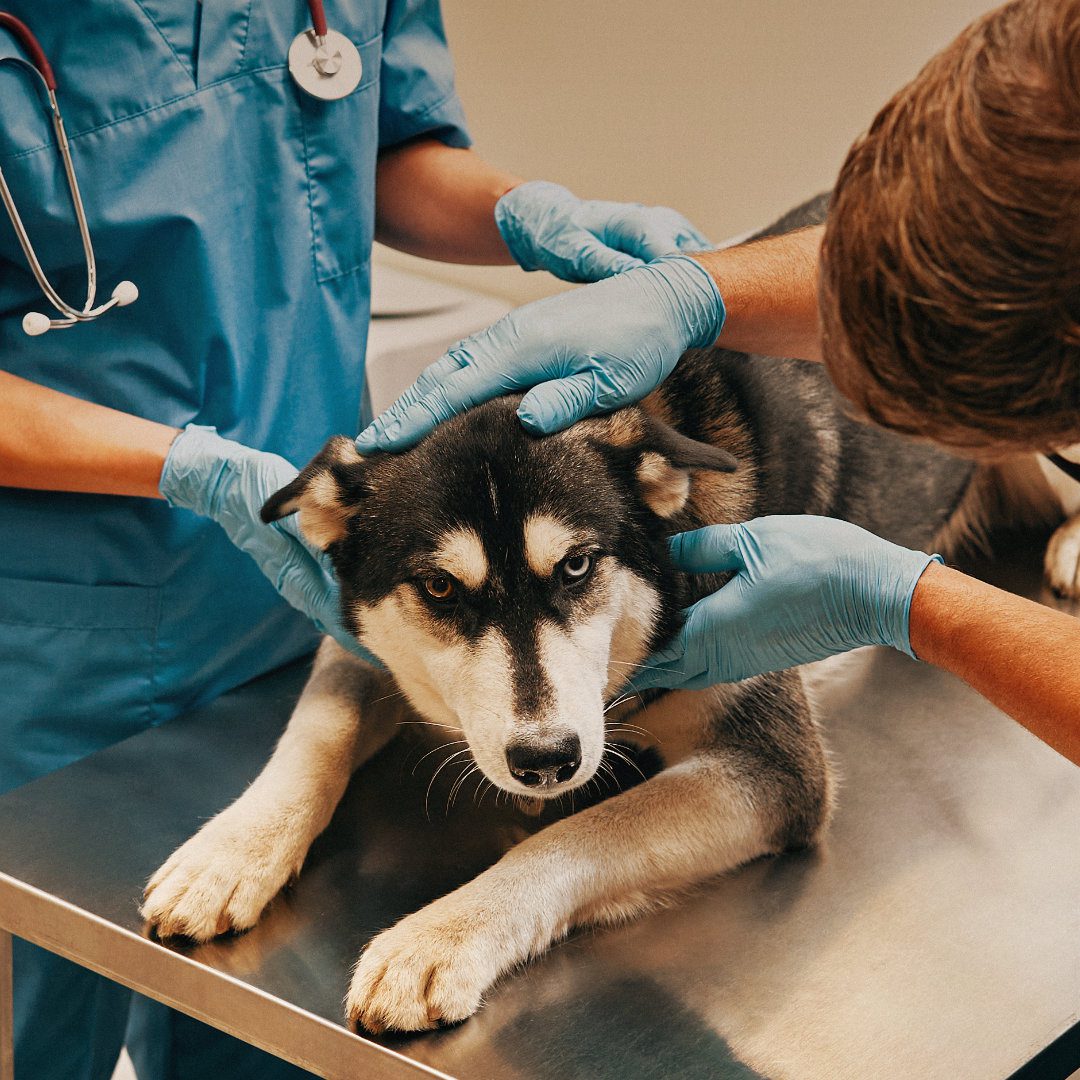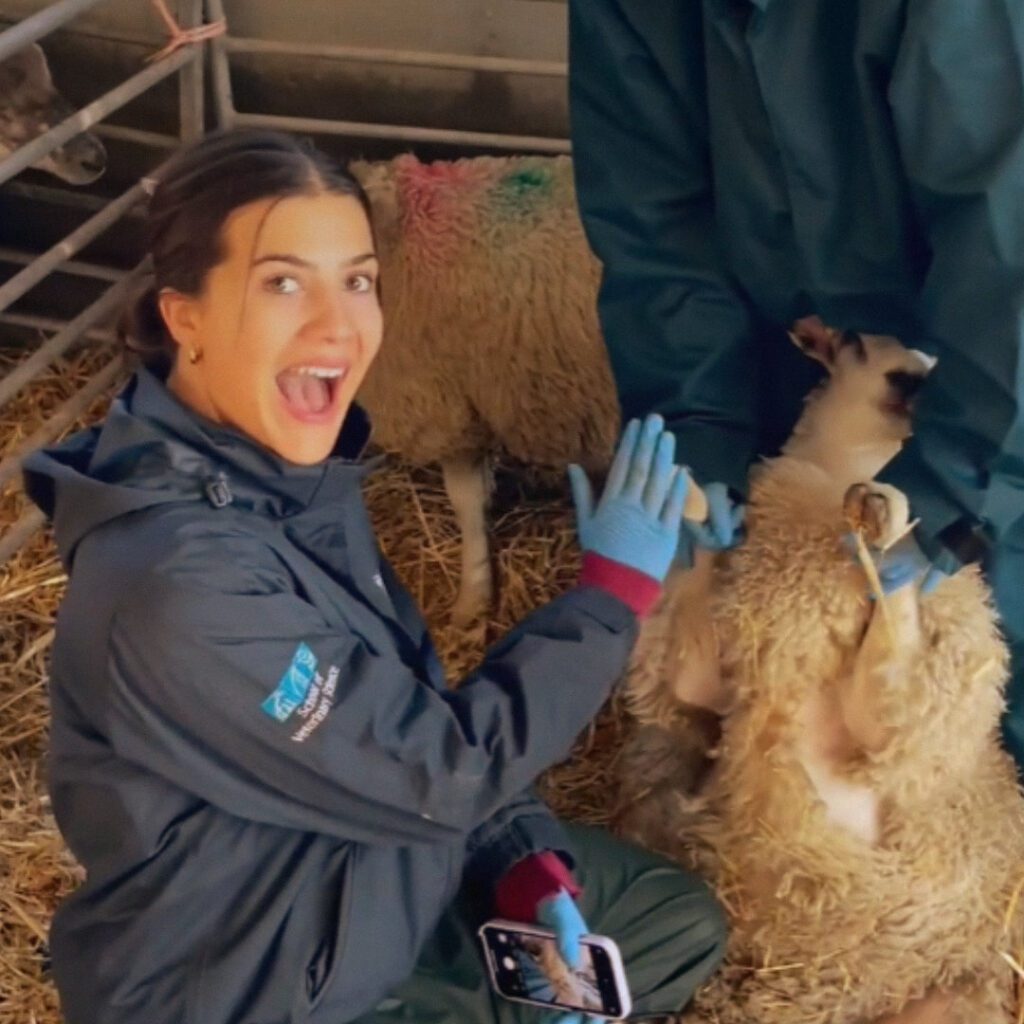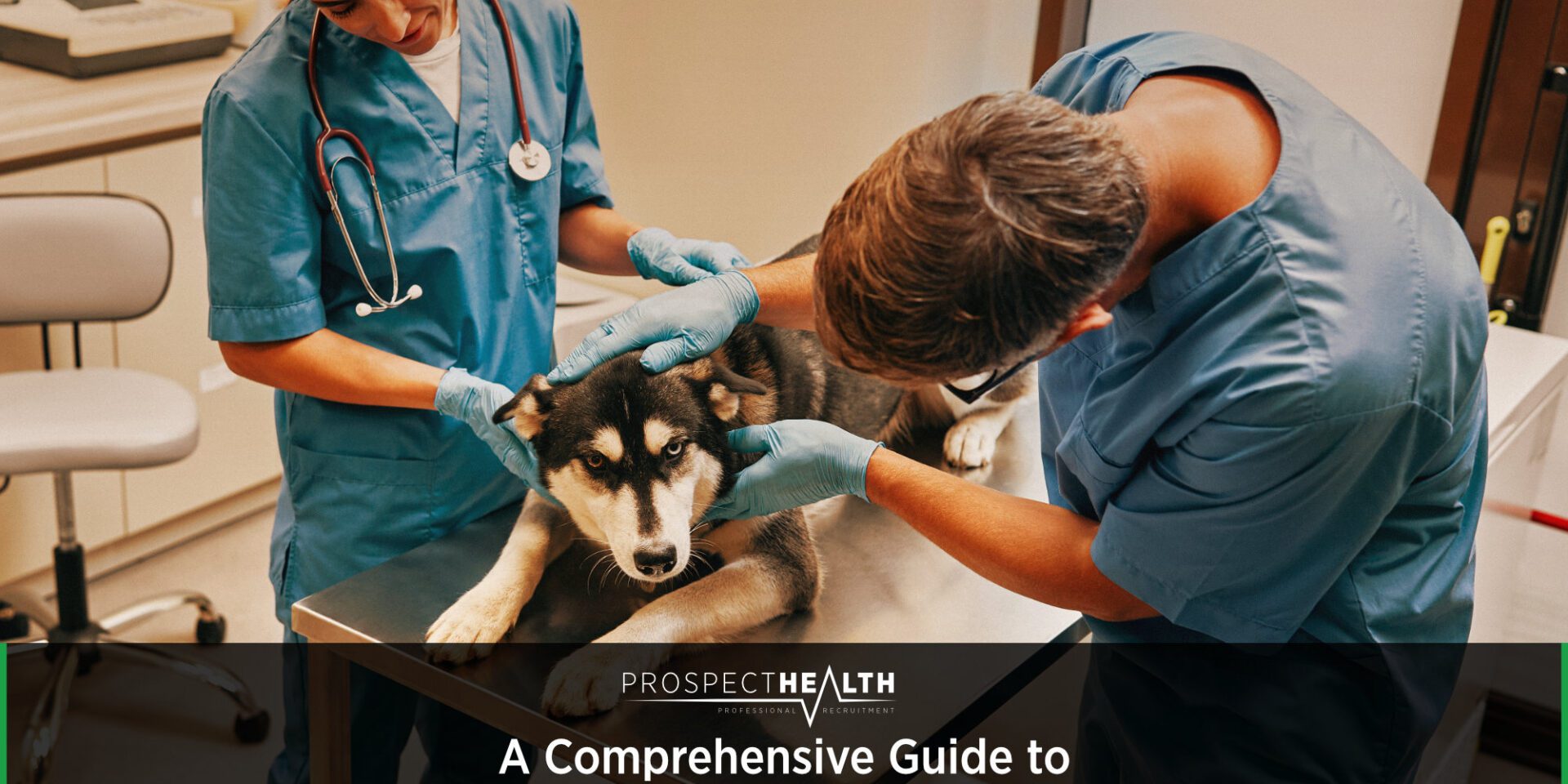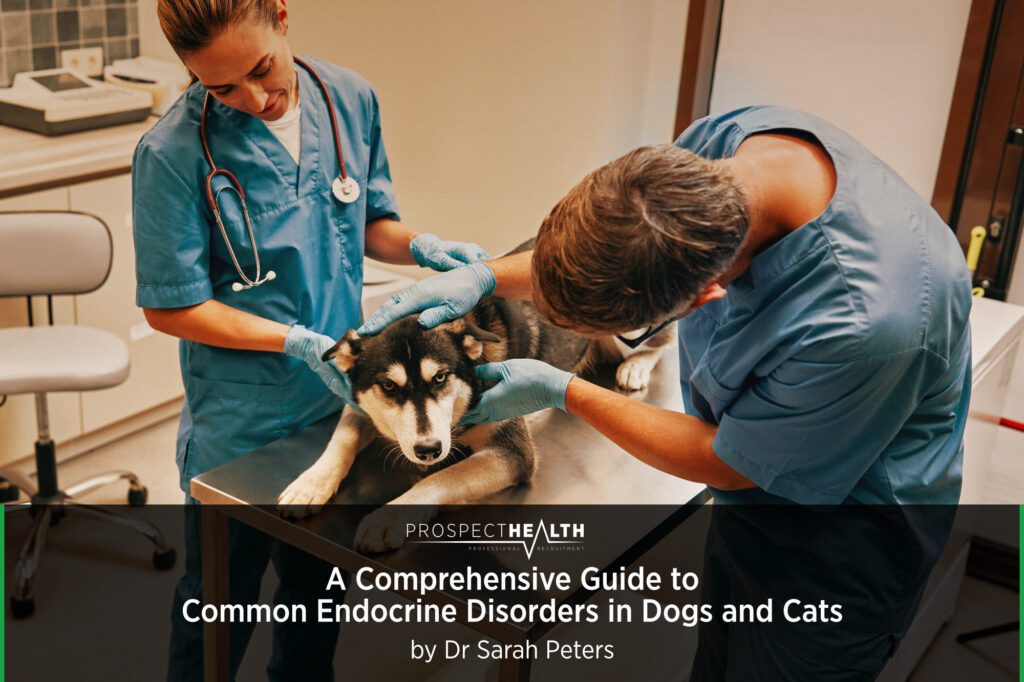October 15, 2025 | Vet Student | Veterinary
Veterinary CPD webinar
A Comprehensive Guide to Common Endocrine Disorders in Dogs and Cats
By Dr Sarah Peters
Endocrine disorders are a frequent challenge in veterinary practice. Dr Sarah Peters recently recorded a webinar for us to help Veterinary Students understand the key clinical signs, diagnostics, and treatments that can make a significant difference in patient outcomes.
This blog covers the most common endocrinopathies you’ll encounter in dogs and cats, including diabetes insipidus, Cushing’s disease, Addison’s disease, thyroid disorders, acromegaly, and hyperparathyroidism.
If you would like to receive a copy of the webinar recording and be added to our mailing list for future webinars, please complete the form below:

Access our pre-recorded Veterinary Webinars
1. Diabetes Insipidus (DI)
Overview:
Diabetes insipidus is a condition characterised by an inability to concentrate urine, leading to excessive thirst and urination (polydipsia and polyuria). There are two main types: central (deficiency in ADH) and nephrogenic (kidneys do not respond to ADH).
Diagnosis:
- Water deprivation test (classical but complex)
- Desmopressin trial (observing changes in water intake and urine concentration)
- Lab work: hemoconcentration, dilute urine (isosmotic), and occasional azotemia
Treatment & Monitoring:
- Not always necessary if the patient is managing well
- Desmopressin (oral, injectable, intranasal) can be used if treatment is warranted
- Monitor for overhydration, hyponatremia, urine specific gravity, and water intake
2. Cushing’s Disease (Hyperadrenocorticism)
Overview:
Cushing’s disease results from excess glucocorticoids (cortisol). Common in dogs; rare in cats. Causes include:
- Pituitary-dependent (most common, 85%)
- Adrenal-dependent
- Iatrogenic (excess steroid administration)
Clinical Signs (The Five P’s):
- Polyuria, polydipsia, polyphagia, pot-belly, panting
- Alopecia, thin skin, hyperpigmentation, comedones
- Muscle weakness, hypertension, lethargy
Diagnostics:
- Urine cortisol: creatinine ratio (rule-out)
- Low-dose dexamethasone suppression test (diagnosis)
- High-dose dexamethasone (differentiation between pituitary vs adrenal)
- CBC: stress leukogram, thrombocytosis
- Chemistry: elevated ALP, ALT, cholesterol, triglycerides
- Ultrasound: adrenal gland size, hepatomegaly, gallbladder mucoceles
Treatment & Monitoring:
- Trilostane (Vetoryl) inhibits cortisol and aldosterone production
- Mitotane (less common due to side effects)
- Surgery or radiation for pituitary or adrenal tumors (rare)
- Monitor blood pressure, electrolytes, clinical signs, ACTH stimulation test
3. Addison’s Disease (Hypoadrenocorticism)
Overview:
Addison’s disease is a deficiency of glucocorticoids and, in typical cases, mineralocorticoids (aldosterone). Atypical Addison’s involves only glucocorticoid deficiency.
Clinical Signs:
- Lethargy, weakness, anorexia, vomiting, diarrhoea
- Can present acutely in crisis with shock and hypoglycaemia
- Often “the great pretender” – can mimic many diseases
Diagnostics:
- Typical Addisonian: hyponatremia, hyperkalaemia, low Na:K ratio (<27)
- Atypical Addisonian: may appear normal on basic chemistry
- Basal cortisol: low to very low
- Definitive: ACTH stimulation test
Treatment:
- Acute crisis: IV fluids, correct electrolytes, treat hyperkalaemia and hypoglycaemia
- Long-term: glucocorticoids (prednisone) ± mineralocorticoids (DOCP injections or fludrocortisone)
- Monitoring: electrolytes, clinical signs, stress-dose adjustments during events
4. Hypothyroidism (Dogs)
Overview:
Most commonly primary hypothyroidism due to idiopathic atrophy or immune-mediated destruction. Rarely pituitary-driven.
Clinical Signs:
- Lethargy, weight gain despite normal appetite
- Alopecia, rat tail, skin infections
- Peripheral neuropathy in some cases
Lab Findings:
- Hypercholesterolemia, hypertriglyceridemia
- Low or low-normal T4
- Elevated TSH, low free T4
Treatment & Monitoring:
- Levothyroxine (usually BID for best regulation)
- Recheck thyroid levels 4–6 hours post-pill one month after dose change
- Monitor chemistry and clinical signs every 6 months
5. Hyperthyroidism (Cats)
Overview:
Excess thyroid hormone production, common in older cats, often coexisting with kidney disease.
Clinical Signs:
- Weight loss despite increased appetite
- Hyperactivity, increased drinking/urination
- Vomiting, changes in meow, unkempt coat, thick nails
- Palpable thyroid slip
Lab Findings:
- High T4 and free T4
- Low TSH
- ALT elevation, possible azotaemia
Treatment Options:
- Methimazole (oral, transdermal, or compounded)
- Iodine-restricted diet
- Surgery (thyroidectomy, with caution for parathyroids)
- Radioactive iodine (I-131), gold standard
Monitoring:
- CBC, chemistry, urinalysis, thyroid panel 2–4 weeks after starting therapy
- Regular monitoring for kidney function
6. Acromegaly (Cats)
Overview:
Excess growth hormone (GH) due to pituitary adenoma, leading to IGF-1 elevation.
Clinical Signs:
- Diabetes-like syndrome (PUPD, polyphagia)
- Insulin resistance despite high-dose insulin
- Broad head, enlarged paws, tongue, jaw abnormalities
- Organomegaly, hypertension, heart murmurs
Diagnosis:
- Measure IGF-1 levels, typically six weeks after starting insulin
Treatment & Monitoring:
- Radiation therapy to shrink pituitary adenoma
- Hypophysectomy (rare, technically challenging)
- Medications (somatostatin analogs, dopamine agonists)
- Diabetes management and monitoring IGF-1
7. Hyperparathyroidism
Overview:
Excess parathyroid hormone (PTH) leads to hypercalcemia and affects kidneys, heart, GI tract, and neurologic function.
Clinical Signs:
- Often asymptomatic early
- Later: weakness, anorexia, vomiting, lethargy, PUPD in dogs
Lab Findings:
- Hypercalcemia (total and ionized)
- Inappropriately normal or high PTH despite high calcium
Treatment:
- Surgical removal (parathyroidectomy, sometimes thyroidectomy)
- Ultrasound-guided ethanol or heat ablation for nodules
- Medical management (steroids, diuretics, bisphosphonates) – less effective
Monitoring:
- Calcium levels closely post-procedure (12–24 hours and 3–5 days) to prevent hypocalcemia
Final Thoughts
Endocrine disorders can be complex, but careful attention to clinical signs, lab work, and appropriate treatment options can dramatically improve patient quality of life. With diligent monitoring and owner education, many of these conditions are highly manageable, making endocrinology one of the most rewarding areas of veterinary medicine.
If you’re looking to move roles after graduation or if you’re looking for a role once you graduate our team can help
You can call us on 01423 813453 or email us at [email protected]
View all our Veterinary Jobs

Next Up: Anna Pill – Introduction to finding a graduate veterinary job
Anna Pill, Final Year Veterinary student at Liverpool University, shared her job hunting journey with us and all our veterinary student population.
Over a series of blogs and videos she will dispel the myths of finding your first role and give you some top tips to help you make the right decision about your first graduate veterinary job.

Talk to a specialist
AMY ROGAN
Specialist Recruitment Consultant
Hi, I’m Amy, a specialist recruitment consultant at Prospect Health. I recruit for Veterinary Surgeons in the Northern and Western areas of the UK, as well as Ireland.
What I love most about recruitment is building relationships with clients and candidates, and really getting to know what they’re looking for, and supporting them throughout the process to get there…
October 15, 2025 | Vet Student | Veterinary



